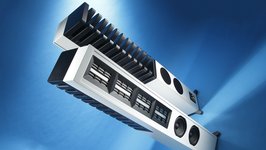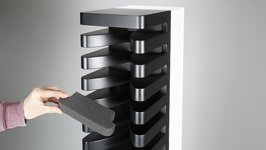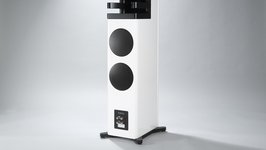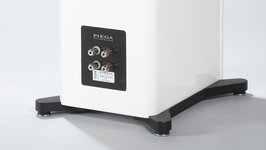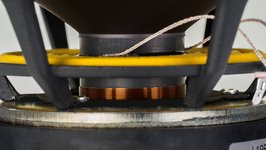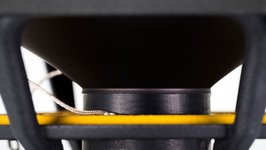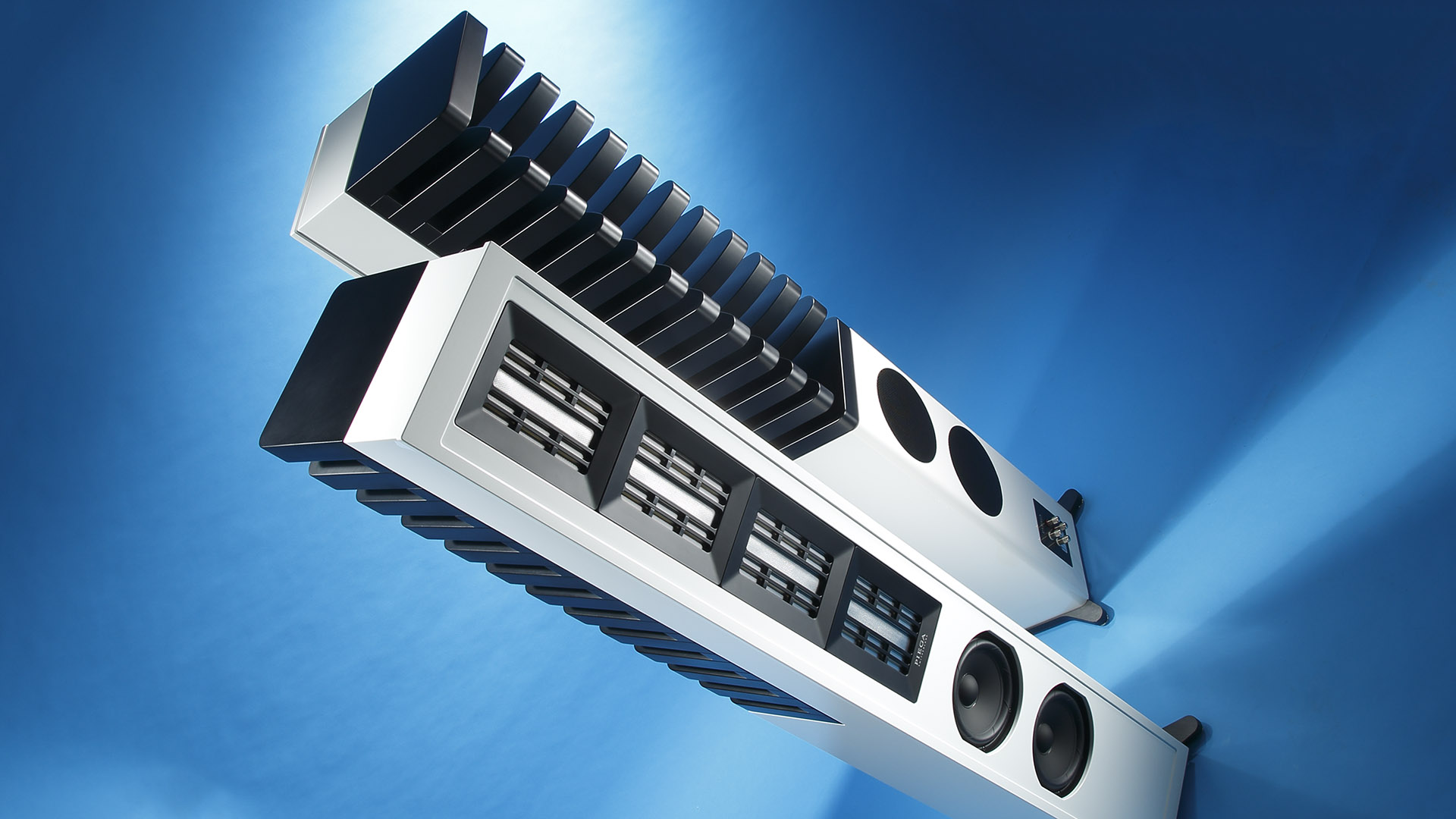
Floorstanding Speaker Test
Piega MLS 3 Review
Swiss Delight – The Piega MasterLineSource 3 is the newest addition to the reference class of the Swiss loudspeaker specialist, which was started in 2013 with the MLS. With these new loudspeakers, Piega aims to uncompromisingly unite outstanding sound qualities, unique technology and highest living room compatability. We have conducted a detailed test to determine how well this has succeeded.
They almost come to the height of a full-grown man – at least if you take the height of the author as a reference for once. On the other hand, they are slimmer than a vinyl record with a cabinet width of just 23 centimeters. The goal the Piega developers had in mind was to make the best enjoyment of sound possible even in small to medium-sized rooms. To this end, they developed new ribbons for the middle and high frequency ranges, consisting of a film so thin that a human hair almost looks as thick as a tree trunk in comparison. In order to meet the requirements of a genuine line source, they stacked four of these transducers on top of each other, all of which were created by hand in a complex process.
The high frequency range is reproduced by the ribbed foil in the center of the chassis, while the midrange ribbon sits to its left and right and is divided into six segments per side. In order to enable these drivers to be capable of producing high sound pressure with as little amplifier power as possible, chief developer Daniel Raymann incorporated plenty of neodymium as a magnetic material. Even the front panel of the chassis contains the rare-earth element. As if that wasn‘t enough, seemingly endless tests were conducted with various adhesives until one was found that offers the best sound, while being as durable and easy-to-use as possible. Reading this sometimes makes you wonder what apparently miniscule details developers consider...
Not only the Ribbon is Special
That‘s not even all, because the MLS 3, like its two larger brothers, is designed as a dipole speaker in the mid and high range. In this type of construction, the sound generated by the drivers is emitted both to the front and to the rear. This is a concept that very much suits a ribbon loudspeaker, as these inherently radiate the sounds to both sides. Thus, no part of the sound that is transmitted to the rear has to be elaborately silenced by damping.
In the low frequency range, too, a standard solution would not do; therefore, in cooperation with the Scandinavian manufacturer Seas, new small woofer drivers measuring only 18 centimeters were designed. Thanks to their low mass, these react quickly to impulses and can deal with high power inputs without distortion. A high-performance voice coil with a titanium coated former, a basket aerodynamically optimized for minimal flow noise, a special membrane geometry including reinforcements at defined points and the specially treated aluminum of the diaphragms are further refinements that aim to serve the perfect sound.
Instead of a classic system with bass ports, the MLS 3 was given two passive radiators, which, positioned at the rear, noiselessly and effectively pursue their work of deepening the bass. Due to the almost uniformly round radiation of sound in the frequency range below about 150 Hertz, bass speakers do not necessarily have to be built according to the dipolic principle. However, there have always been some experiments in this direction, up to the present.
Properly implemented, a dipole loudspeaker has fewer problems with room resonances, while having a sound pressure that drops less in the distance, and also less distortion. On top of all that, because the sound radiates to the front and back, it often sounds very spatial and particularly airy. This effect is supported by the fact that there is no real cabinet, but only a frame and a baffle on which the drivers are mounted.
For the crossover, the Swiss engineers rely on a rather steep solution with 24 decibels per octave. It is built with miraculously good components, but they stay clear of being suspicious to contain „voodoo“. The cabling also consists of a solid, but not outlandish solution. They have technical innovations, but remain „down to earth“.
Why Dipole? Why not!
Let‘s talk about the disadvantages of this sound radiation principle: It needs good chassis, and these cost a lot of money. The frame that holds the speakers must be very stable to control the forces that are at work here, especially in the bass range. Additionally, of course, it is an art in itself to combine the different materials and radiation properties of the ribbons with the bass range seamlessly and homogeneously. Dipole speakers are also often somewhat wider than others, and the distance to the wall must be determined meticulously and empirically, because the ratio of direct to indirect sound changes with every centimeter. Operation directly on the wall or even somewhat close to the wall is usually not possible.
Dipole loudspeakers are also often said to be inferior to classic multi-way concepts and especially to coaxial loudspeakers. This often rests on alleged shortcomings in terms of their ability to focus sound events precisely and to render them in their natural size.
However, the Swiss minds at Piega have almost 20 years of experience with their worldwide unique, patented coax ribbon system. With this, they had a very precise idea of what was possible in terms of image precision during the development and fine-tuning of these speakers.
Therefore, they designed a lamella construction at the back of the midrange drivers / tweeters, which distributes the rear-radiated sound via an acoustic lens in an even and wide way. Accordingly, the problems concerning the correct setup of conventional dipole speakers should be solved – without negating the advantages of the undamped sound radiating openly to the back of the speakers. Thus, and with the help of foam pieces that can be inserted between the lenses if necessary, the creators of the MLS 3 from Lake Zürich want to ensure that the entire potential of their speakers can be fully developed even in rather cramped spaces.
The visual result of these efforts is definitely something to be proud of: timeless and elegant is perhaps the best description of what designer Stephan Hürlemann has created. The different lacquer and veneer finishes, the latter available for an additional charge, ensure that the speakers can be integrated into pretty much any living environment. An aspect that perfectly accompanies the minimal footprint of the slim musical pillars. Magnetically adhering covers in various colors represent the final touch in the successful visual appearance.
Optics & Measurements
After a small stop in the STEREO photo studio, the Piega speakers fell into the hands of our measurement engineer. He did his job by intensively torturing the 65-kilo columns with signals that none of us music enthusiasts would like to hear, let alone voluntarily expose ourselves to over a longer period of time. However, the MLS was quite unimpressed by this and proved that its creators designed it with intellect, meticulousness and great musical understanding. Low distortion values, good impulse behavior and a frequency response that is quite typical for dipole loudspeakers and drops towards the higher frequencies – due to the part of the sound that is coming from the rear not being measured – were more or less what we expected after our first listening impressions, which were already very positive.
We were a bit surprised when we measured the efficiency, which was around ten dB below the manufacturer‘s specifications, at 82 decibels. Even repeated tests and measurements did not change this. This is not dramatic in itself, but should quickly put an end to illusions about operation with low-wattage Class A amps or even single-ended tube amplifiers. We also quickly ended an experiment with the VTL IT-85 tube amplifier in order to indulge ourselves with the Accuphase E-800 in further listening sessions. Even with this quite impressive integrated amplifier, we never had the feeling of applying too much power – the Piega speakers willingly accepted every bit of power made available to them. And yet the MLS 3 does anything but disappoint on the dynamic side, despite all the hunger it shows for high wattages. The way it uninhibitedly shoots impulses directly into the room, almost making them explode there, is at the very top of the hi-fi cosmos and on the best way to sounding like reality.
When I was still a young man and working in a hi-fi studio in Cologne, I received my first lessons on the subject of listening and the evaluation of hi-fi components. At that time, the man who gave me the decisive impulses, as well as the basic rules, was none other than Branko Glisovic, the long-time managing director of the High End Society Service GmbH, organizers of the leading international audio show High End. One sentence that has always accompanied me since then was: If voices and acoustic instruments don‘t sound natural and real, you don‘t even need to listen to the rest, as long as you are serious about high fidelity in the sense of high faithfulness to the sound. I also remember that around that time a small loudspeaker caused a sensation that delighted many customers with its dynamics and resolution as well as its neat finish in a piano lacquered cabinet – a two-way standmount speaker that went by the name of Piega Arlecchino.
Yes, indeed, this speaker easily bested my pride and joy at the time, a Rogers Studio 1/1P, in various respects, so that I was certainly quite tempted. But then this small sentence mentioned above came back to me, and I began to torment the wondrous little box with heaps of voices – and in the end remained faithful to my English wooden loudspeakers.
It‘s in the Voices
Please forgive this little excursion into a distant past, but when I listen to the MLS 3, I have to confess my enthusiasm. Especially when I hear how it puts Grace Jones in the room just as much as Marla Glen, effortlessly sketching Johnny Cash into the surroundings, showing how he mobilizes his last forces to cement his musical legacy before his death. Here, I have to acknowledge that the development of the Swiss manufactury has clearly gone in the right direction.
The bass range has also undergone a positive development – it is both faster and more integrated, to an extent that I have never experienced before with a Piega speaker. It also reaches far down and is located on a scale between dry and juicy exactly where supporters of both factions give an approving and benevolent nod.
Two other musicians also left their eternal marks in the world of music up until shortly before their deaths: Leonhard Cohen and David Bowie – the latter with „Blackstar,“ a touching farewell in the face of death.
While I followed Bowie with curiosity and at times even enthusiasm over nearly his entire career, I only really came to appreciate Cohen with his last two albums. The MLS3 does justice to each of these artists by precisely capturing their vocal characteristics and transporting its listeners to the different recording spaces and -moods. It seems almost as if it had been present at each production and had stored the dimensions and acoustic conditions as well as the „vibes“ in the recording room with a photographic memory, aiming to reproduce just that.
Air & Focus
As you would expect from a dipole loudspeaker, the sound image is large and very airy, without any lack of precision therein to complain about. The wide dispersion of the sound image is also very pleasing. You don‘t necessarily have to sit perfectly fixed and still exactly in the middle between the speakers to get a detailed reproduction of the stage from left to right.
In my experience, the quality of the performance of a hi-fi system is also always shown by how far it opens the door for the listener towards unfamiliar or even unloved music. Here, too, the Piega knows how to establish a connection with listeners even in non-audiophile productions.
No, mediocre productions don‘t suddenly become thrilling sonic gems, but when Bob Dylan goes on his rant about „False Prophets,“ it comes across as very intense and convincing in all its aggression and dirtiness. This is probably, in a large part, due to the skillful interplay between the ribbons and the woofers.
It is also fascinating to hear the extent to which the concept of the dampable lamellas and thus the change from dipole to direct speaker succeeds. The tonality remains the same, the bass seems even a touch drier, although it is not subjected to any change from a technical point of view. The sound image becomes somewhat narrower and flatter, ultimately more direct than before, but the performance continues to convince with an extraordinary airiness.
With all these capabilities, the Piega MLS 3 shows that it rightly holds a claim to be among the world‘s best. No competitor can be found that looks better, is more flexible in its placement, and takes up less space at the same time.
Verdict
An exceptional loudspeaker in every respect, convincing in terms of sound and concept. Small footprint, excellently crafted and characterized by a very natural, dynamic as well as airy and spacious sound image.
Technical Details
Floorstanding speakers (passive)
Piega MLS 3
Price: ca. 35000 € (Last check: 20.10.2021)
Dimensions WxHxD: 23 x 165 x 33 cm
Weight: 65 kg
Warranty: 6 years
Manufacturer: Piega
General Data
Measurement Results
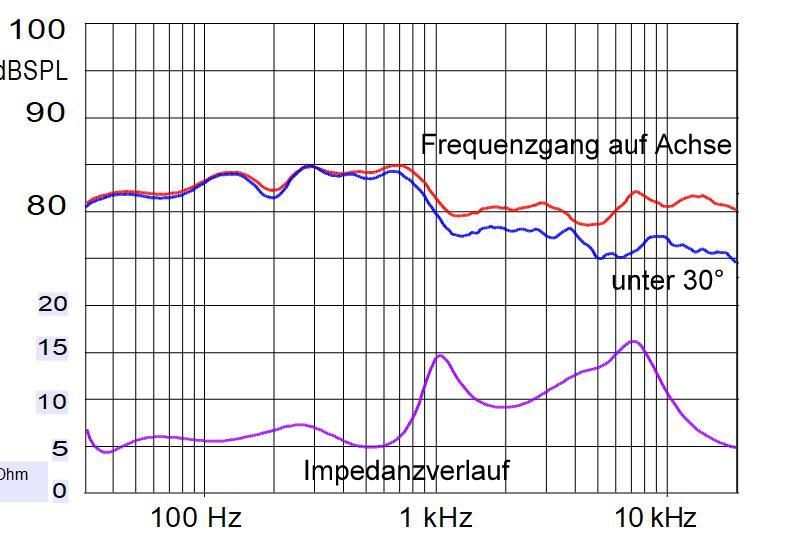
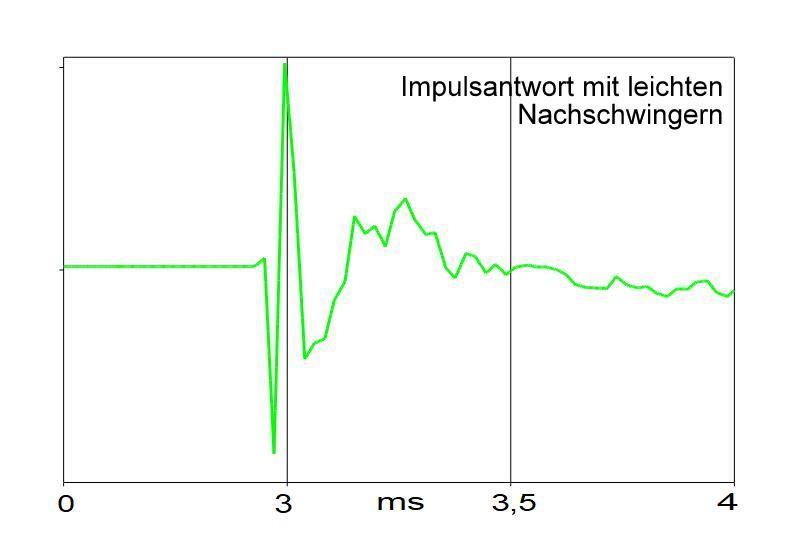
Measurement Values
| Rated impedance at DC: | 4 Ohm |
| Minimum impedance: | 4.5 Ohm |
| Minimum impedance at: | 27 Hz |
| Maximum impedance: | 16.5 Ohm |
| Maximum impedance at: | 7000 Hz |
| Sound pressure characteristic (2.83 V/m): | 82 dBSPL |
| Power for 94 dBSPL: | 8.3 W |
| Lower cut-off frequency (-3dBSPL): | <30 Hz |
| Distortion factor at 63/3k/10k Hz: | 0.3/0.1/0.06 % |
Stereo Test
Sound Level Floorstanding speaker: 97%
Price/Performance
Lab Comment
Frequency response average, impulse response very good; low distortion; low lower cut-off frequency; poor efficiency, impedance not critical
Features
Three-way dipole loudspeaker with variable dispersion; various designs; magnetically adhering covers; solid bi-wiring terminal
Test Devices
CD-Player:
T+A MP 3100 R
Turntable:
Transrotor Rondino
Integrated Amps:
VTL IT-85,
Accuphase E-800
Loudspeakers:
B&W 800 D3,
DALI Epicon 6
Cables:
Cardas, HMS,
Audioquest
What We've heard
David Bowie – Blackstar
The musical legacy of the Brit, who died in 2016: dark, fragile, melancholic and highly creative; and cleanly produced by Tony Visconti
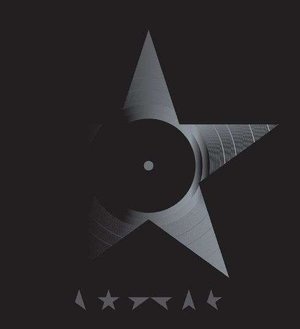
Keyword: Line Source
The opposite of a point source. Sound is emitted over the entire length of the cabinet. Advantage: At a greater distance, the sound pressure drops more slowly, and due to numerous drivers, distortion decreases.
 MAGAZINE
MAGAZINE